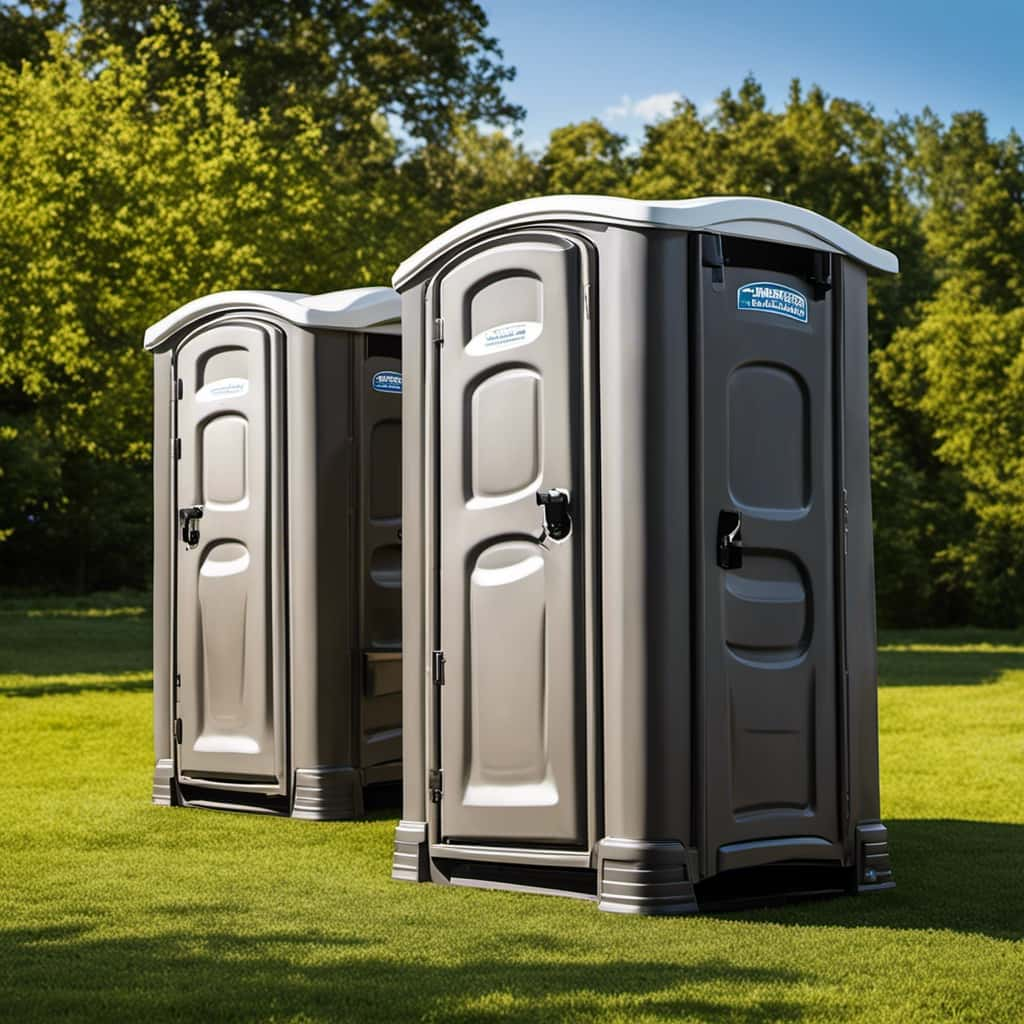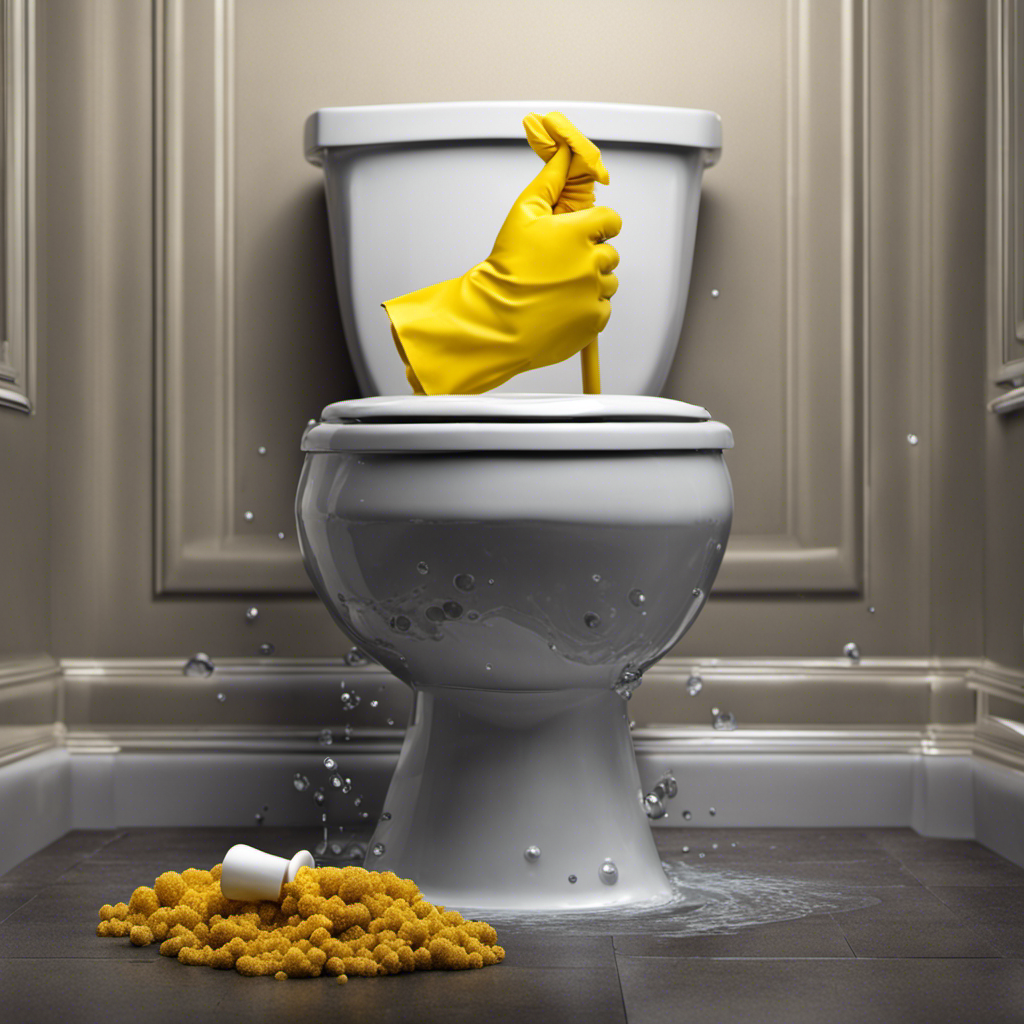Did you know that clogged toilets are one of the most common household plumbing issues? If you’re tired of dealing with this frustrating problem, then you’re in the right place.
In this guide, we will show you step-by-step how to flush a clogged toilet. From assessing the severity of the clog to using the right tools and techniques, we’ve got you covered.
Get ready to become a master of toilet unclogging!
Key Takeaways
- Assess the severity of the clog by observing the water level in the bowl.
- Gather necessary tools and materials such as a plunger, bucket, rubber gloves, and toilet auger.
- Attempt to unclog the toilet using a plunger by creating suction and repeating the plunging motion vigorously.
- Use a toilet auger for stubborn clogs by extending the cable, inserting it into the bowl, and rotating the handle to retrieve the clog.
Assess the Severity of the Clog
To determine the severity of a clog, we need to carefully observe the water level in the toilet bowl. Assessing clog severity is crucial in order to apply the appropriate solution.
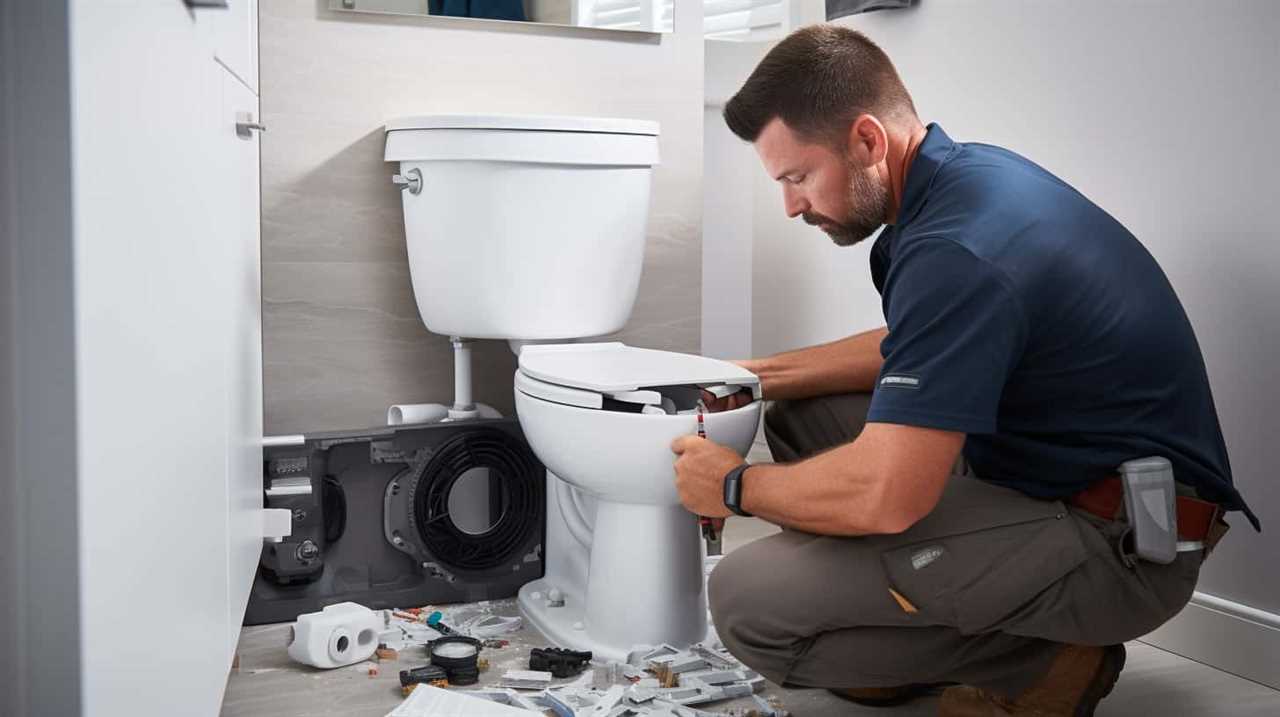
Here are the signs of a clogged toilet that will help you assess the severity:
- Low water level: If the water level in the bowl is significantly lower than usual, it indicates a partial clog.
- Slow draining: When flushing, if the water drains slowly or doesn’t drain at all, it suggests a more severe clog.
- Overflowing: An overflowing toilet is a clear sign of a severe clog that requires immediate attention.
Gather Necessary Tools and Materials
We will need a plunger and a bucket to gather the necessary tools and materials for unclogging a toilet. Here are the steps to gather the tools and materials:
- Plunger:
- Look for a plunger specifically designed for toilets. It should have a flange or an extended rubber cup to create a seal.
- Bucket:
- Find a sturdy bucket that can hold water. This will be used to collect any excess water or debris during the unclogging process.
- Optional Tools:
- Rubber gloves: To protect your hands from any germs or bacteria.
- Toilet auger: If the clog is severe, you may need a toilet auger to break up the blockage.
- Towels or rags: To clean up any spills or messes that may occur during the unclogging process.
Now that we’ve gathered all the necessary tools and materials, we can proceed to the next step: attempting to unclog the toilet using a plunger.
Attempt to Unclog the Toilet Using a Plunger
We will begin by using a plunger to attempt to unclog the toilet. The plunger is a simple yet effective tool for dislodging blockages in the toilet trap. To properly use a plunger, follow these steps:
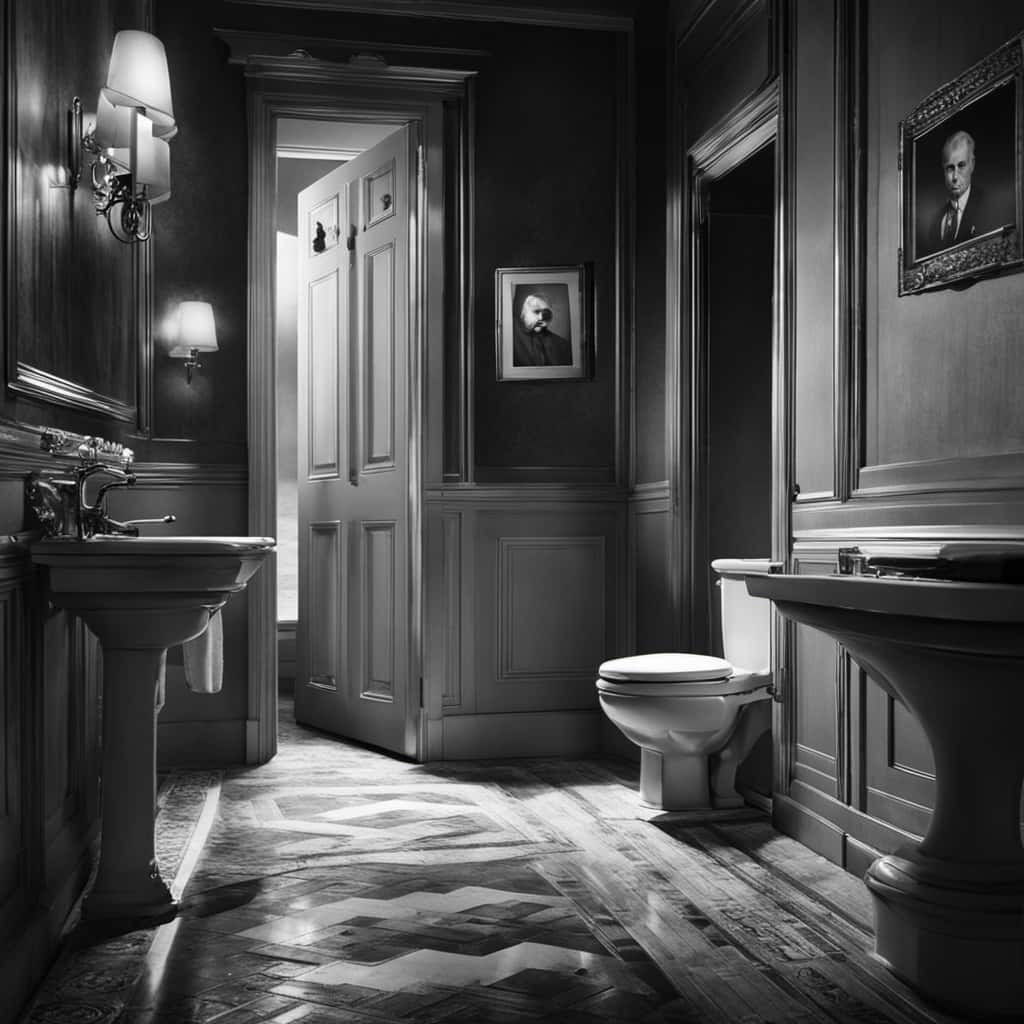
- Position the plunger: Place the rubber cup of the plunger over the drain hole at the bottom of the toilet bowl. Ensure a tight seal is formed between the plunger and the drain.
- Apply pressure: Push the plunger down gently, then pull back quickly. Repeat this motion several times to create suction and pressure that can dislodge the blockage.
- Continue plunging: Keep plunging vigorously for about 20 seconds. This repeated pressure and suction action may help break up the clog and allow it to move through the pipe.
- Check for success: After plunging, flush the toilet to see if the water drains properly. If the water level subsides, the clog may have been successfully cleared.
However, when using a plunger, there are common mistakes to avoid:
| Common Mistakes | Solution |
|---|---|
| Insufficient seal | Ensure a tight seal between the plunger and the drain. |
| Inadequate force or speed | Plunge vigorously and with sufficient force. |
| Inconsistent plunging technique | Maintain a steady rhythm and motion while plunging. |
| Neglecting to check for success | Flush the toilet to confirm if the clog is cleared. |
Use a Toilet Auger for Stubborn Clogs
After attempting to unclog the toilet using a plunger, we can now move on to addressing stubborn clogs by utilizing a toilet auger. A toilet auger, also known as a closet auger, is a tool specifically designed to unclog toilets. Here’s how to use a toilet auger to tackle those tough clogs:
- Prepare the auger: Extend the auger cable by turning the handle clockwise until it’s fully extended.
- Insert the auger: Carefully insert the auger into the toilet bowl, making sure the rubber sleeve is covering the drain opening.
- Rotate and push: Slowly rotate the handle clockwise while pushing the auger cable deeper into the drain. This will help break up the clog.
- Retrieve the clog: Once you feel resistance, rotate the handle counterclockwise to retrieve the clog from the drain.
- Flush and repeat: Flush the toilet to ensure the clog is fully cleared. If the clog persists, repeat the process.
Troubleshooting common toilet issues:
- If the auger doesn’t reach the clog, the obstruction may be further down the drainpipe. In this case, professional assistance may be required.
- Alternatives to using a toilet auger for unclogging toilets include using a toilet plunger or a chemical drain cleaner. However, caution should be exercised when using chemicals, as they can be harmful to both the environment and the plumbing system.
Prevent Future Clogs With Proper Maintenance and Care
To ensure the continued functionality of your toilet and prevent future clogs, it is essential to maintain and care for it properly. Regular toilet inspections are crucial in identifying any potential issues before they become major problems. By following a few simple steps, you can keep your toilet in excellent condition and minimize the risk of clogs.
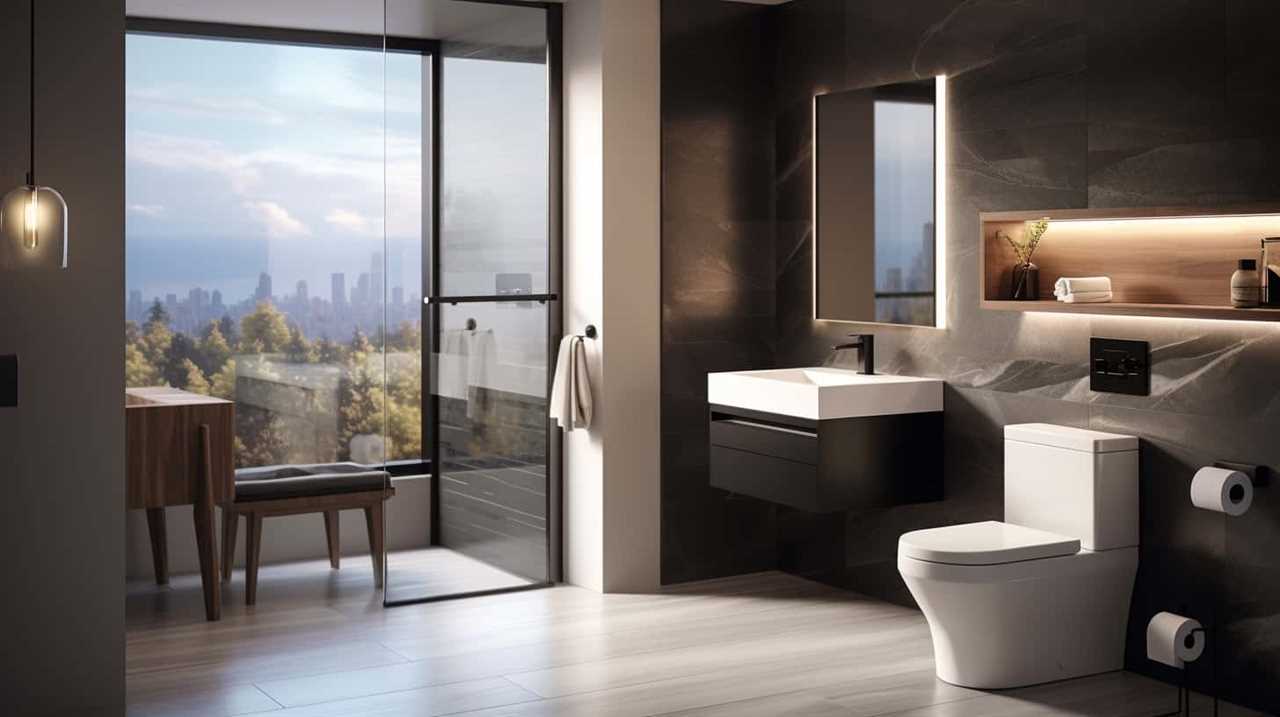
One common mistake to avoid is flushing items that should not be flushed, such as sanitary products, wipes, or excessive amounts of toilet paper. These can easily cause clogs and damage your plumbing system. Additionally, using a plunger correctly can help dislodge minor clogs without causing further damage. However, it is important to avoid using excessive force, as this can lead to pipe damage.
By incorporating these maintenance practices and avoiding common mistakes, you can keep your toilet running smoothly and prevent future clogs. Regular inspections and proper care are key to maintaining a functional and efficient toilet system.
| Importance of regular toilet inspections | Common mistakes to avoid when unclogging a toilet |
|---|---|
| – Identifies potential issues | – Flushing items that should not be flushed |
| – Prevents major problems | – Using excessive force with a plunger |
| – Maintains a functional toilet system |
Frequently Asked Questions
How Do I Know if the Clog Is Severe Enough to Require Professional Help?
To determine if the clog warrants professional assistance, look for severe clog indicators. If the toilet overflows despite attempting basic unclogging methods, it’s time to call a professional for help.
Can I Use Any Type of Plunger or Is There a Specific One Recommended for Unclogging Toilets?
There are different types of plungers to consider when unclogging toilets. Each type has its pros and cons. It’s important to choose the right plunger based on the severity of the clog.
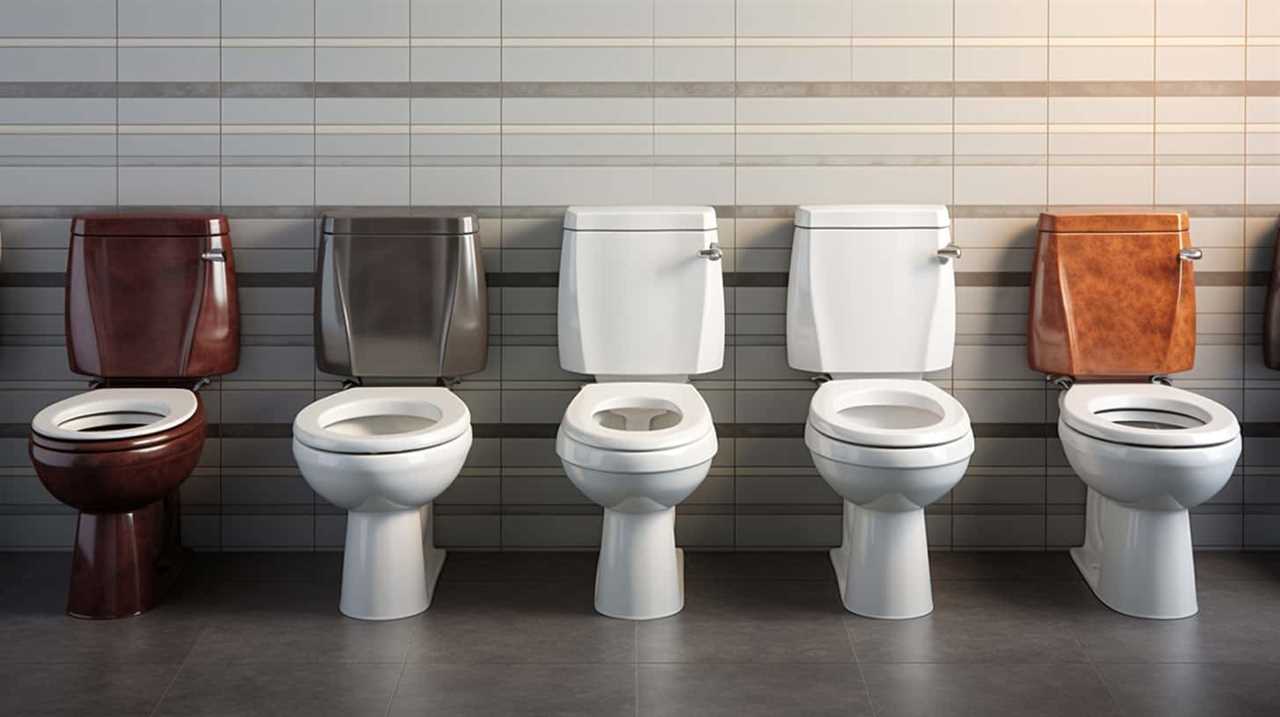
What Should I Do if the Plunger Method Doesn’t Work?
If the plunger method doesn’t work, there are alternative methods and DIY solutions to try. First, check the water level and adjust if needed. Then, use a toilet auger or a mixture of hot water and dish soap to unclog the toilet.
Are There Any Safety Precautions I Should Take When Using a Toilet Auger?
When using a toilet auger, it’s important to take safety precautions. Wear gloves and goggles to protect yourself from debris. Follow the manufacturer’s instructions for proper usage to avoid damaging the toilet.
What Are Some Common Mistakes to Avoid in Order to Prevent Future Toilet Clogs?
To prevent future toilet clogs, we must avoid common mistakes and employ proper prevention techniques. By being mindful of what we flush, using less toilet paper, and regular maintenance, we can keep our toilets functioning smoothly.
Conclusion
In conclusion, unclogging a toilet can be a simple task if approached methodically and with the right tools. By assessing the severity of the clog, gathering the necessary materials, and using a plunger or toilet auger, you can quickly restore your toilet’s functionality.
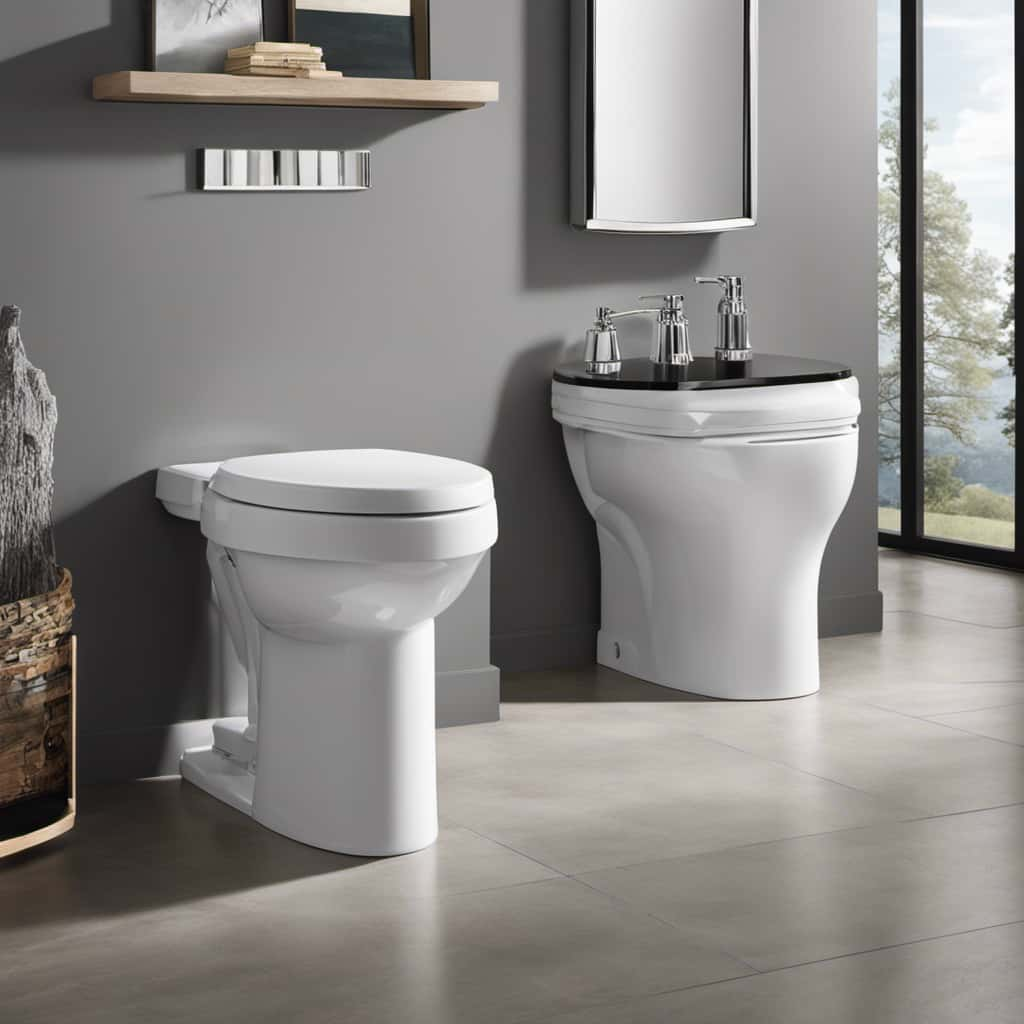
Remember to practice proper maintenance and care to prevent future clogs. Don’t let a clogged toilet ruin your day, follow these steps and get back to business in no time.
